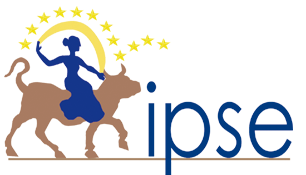 A few days before the European elections, IPSE offers you a final overview of the various forces competing at the EU scale. Pressed to come out strengthened of the ballot, will the right-wing populists engage for that purpose in the formation of a parliamentary group able to shake up the European game? Conversely, the radical left is likely to come out partially weakened from poll. Currently the fifth largest force in the European Parliament, the European United Left (GUE) could see its numbers diminish in favour of other political parties.
A few days before the European elections, IPSE offers you a final overview of the various forces competing at the EU scale. Pressed to come out strengthened of the ballot, will the right-wing populists engage for that purpose in the formation of a parliamentary group able to shake up the European game? Conversely, the radical left is likely to come out partially weakened from poll. Currently the fifth largest force in the European Parliament, the European United Left (GUE) could see its numbers diminish in favour of other political parties.
Towards an extreme right parliamentary super-group?
Gathered in Milan for a large joint meeting on May 18, the major extreme right parties have sketched the outlines of a great alliance in the future European Parliament. The main challenge is to become the third political force in the hemicycle at the expense of the liberal ALDE. The political weight of the national-populists has increased considerably since the recent electoral successes of the Northern League in Italy, in Sweden and in Austria. If these parties are in perfect harmony on issues related to immigration or multiculturalism, there are real differences between them on economic issues or regarding the European construction.
In the current configuration of the European Parliament, the Eurosceptic rights are divided into two political groups: European Conservatives and Reformists (ECR), Europe of Nations and Liberties (ENL). There is also an informal alliance among non-aligned MEPs from some of the most radical extreme right-wing parties of the European political scene: the European Alliance of National Movements.
This is the second group in terms of MEPs that could well come out stronger from the vote according to the first projections of the polls. Indeed, the main parties that make it up (the Rassemblement National, in France, and the Northern League, in Italy) are credited with strong voting intentions in their respective countries. In recent months, Italian Prime Minister Matteo Salvini has been heavily involved in expanding the spectrum of the parliamentary group to other parties of the Eurosceptic right, including the British UKIP, a pro-Brexit formation credited with 35% of the first voting intentions in the UK. With more elected officials, the newly formed group could benefit from more substantial funds, allowing member parties to strengthen their financial resources. Failing to gather around a well-defined project, the extreme-right Europeans could well gather around a common denominator: money.
Add to this that the self-proclaimed defenders of ordinary people have a record in contradiction with their intentions during the election period. Between chronic absenteeism, abstention on the vote on the revision of the Posting of Workers Directive, opposition to women’s rights or the hardening of the fight against tax fraud, the balance sheet of the extreme right in Parliament is quite overwhelming.
A radical left in the grip of divisions
Currently the fifth force of the European Parliament tied with the environmentalists (52 members), the European United Left (GUE/NGL) could well see its existence threatened after the election of 26 May. For the past several years, the GUE has brought together communist, anti-capitalist and radical ecologist formations, most of them from southern Europe member countries (Greece, Spain and Portugal). The heart of its action is the fight against budgetary austerity and for an acceleration of ecological transition in the European Union.
During the previous legislature, divisions have indeed emerged between the parties that make up this parliamentary group, especially at the height of the Greek crisis in the summer of 2015. Several member parties, including La France Insoumise and Podemos (Spain), then sharply criticized the policy of Greek Prime Minister Alexis Tsipras, a former member of the group and a candidate for the European Commission in 2014 under the colours of the GUE. Therefore, it appears very uncertain that the GUE will not part or even become fragmented because of the different stances of its members on the strategy to adopt in the face of austerity policies. Moreover, at the initiative of Podemos, the Left Bloc (Portugal) and La France Insoumise, the transnational list “Now the people” created for this election aims to take the leadership of the anti-austerity left in Europe at the expense of those who have maintained their support for Syriza (like the French Communist Party).
The latest polls do not point to the strengthening of the GUE, as the anti-liberal left shows a fairly clear decline in most countries where the extreme right and the Green are growing. For the candidacy to the President of the European Commission, the European United Left supports a ticket made up of Slovenian Violeta Tomic, who has been a MP of her country since 2014, and Belgian Nicolas Cué, former head of the metalworking section of the FGTB trade union.
Camille Boucher


 English
English